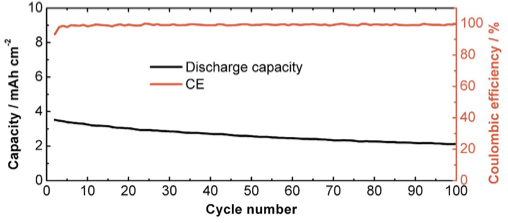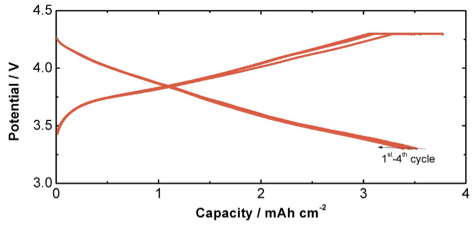Silicon And Carbon Nanocomposite Spheres With Enhanced Electrochemical Performance For Full Cell Lithium Ion Batteries
Patent Status
| Country | Type | Number | Dated | Case |
| United States Of America | Issued Patent | 11,349,120 | 05/31/2022 | 2017-495 |
Full Description
Background
Silicon has proven to be a promising anode material for lithium-ion batteries (LIBs) due to its high theoretical capacity of 3572 mAh/g. However, silicon anodes suffer huge volume expansions during the lithiation process which induces uneven stress-strain distribution causing pulverization and loss of active material. Several academic and industrial efforts have been made on the synthesis of nano silicon, novel binder systems and novel nanostructured silicon anode materials. These methods require very expensive raw materials, high processing cost and result in high surface area which limit the application in full cell LIBs. The large surface area results in a larger solid electrolyte interface which in turn causes high, irreversible capacity loss.
Invention
Researchers led by Prof. Cengiz Ozkan at UCR have developed a patented, innovative and facile synthesis of monodisperse silicon and carbon nanocomposite spheres (MSNS) via a surface-protected magnesiothermic reduction process with subsequent chemical vapor deposition. The team has prototyped both a 2032 type half coin cell with an MSNS anode as well as a full cell LIB with an LCO cathode and an MSNS anode with excellent high reversible capacity, cycling stability and rate performance.

Cycling response of the MSNS/LCO full cell at C/2 rate

Galvanostatic voltage profile of the MSNS/LCO full cell at C/2 rate
State Of Development
The team has prototyped 2032 type coin half cells with the MSNS as anode material and pure Lithium metal chip as cathode which demonstrated a high reversible capacity of 3207 mAh/g with enhanced cycling stability and rate performance. A full cell LIB was built with MSNS as anode and Lithium Cobalt cathode (LCO). The full cell displayed high volumetric energy density of 850 WH/L and excellent cycling stability.
Advantages
The benefits and significance of their innovation are:
Suggested uses
Lithium-ion batteries – specifically anode material, in rechargeable energy storage applications such as:
Other inventions by Prof. Cengiz Ozkan
Please see other inventions by Prof. Cengiz Ozkan
Related Materials
Contact
- Venkata S. Krishnamurty
- venkata.krishnamurty@ucr.edu
- tel: View Phone Number.
Other Information
Keywords
Lithium-ion batteries, Nanocomposite, Silicon anode, Energy storage, Electric vehicles, Drone batteries, Silicon-Carbon composite, Consumer Electronics Battery
